News
Officials wrestle with intricacies of Kalutara sand mining and floods for another round
View(s):By Tharushi Weerasinghe and Mimi Alphonsus
The decision to allow sand mining along the Kalu River in Kalutara was postponed until February 8 by the District Coordination Committee on Thursday.
The Kalutara District Coordination Committee, chaired by Health and Mass Media Minister Dr Nalinda Jayatissa, was due to decide on sand mining in the Kalutara River on January 31, 2025. Despite presentations and a joint report by five relevant government agencies, all affirming that sand mining could not continue in the Kalu River, the committee postponed the decision to February 8, 2025.
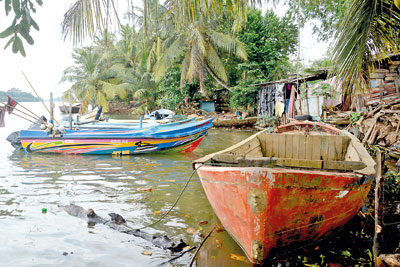
The Irrigation Department has called for a halt to sand mining in the area due to the deterioration of the riverbed
The Irrigation Department has called for a halt to sand mining in the area due to the deterioration of the riverbed, which was leading to other concerns like bank erosion and saltwater intrusion from the river mouth. However, other agencies, like the Geological Survey and Mines Bureau (GSMB), have resisted the move based on sand requirements and the local community’s dependence on the industry.
“We will stop giving licences if we do not get consent from the relevant technical agencies,” said Ranjith Premasiri, Director General GSMB. He claimed that while the GSMB had claimed the existence of sand deposits for mining along the river, the environmental impact of its extraction would be surveyed by the Irrigation Department.
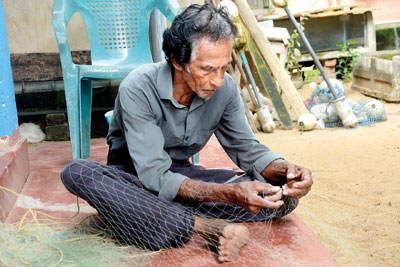
Fisherman W.D. Fernando says his livelihood has been badly affected. Pix by Priyanka Samaraweera
“The GSMB’s calculations of how much sand is available include sand in the river bed itself which would be very destructive to extract,” said Sudarshani Widanapathirana, director of irrigation, Colombo region. She claimed that the methodology used by the GSMB was not scientific and that further destabilisation of the riverbed also affects the Kalutara rail bridge and the land bridge that connects the city to Colombo.
Miners in the area, however, claim that the issues do not arise from sand mining, but from a faulty cut in the Kalido beach sandbar in 2017.
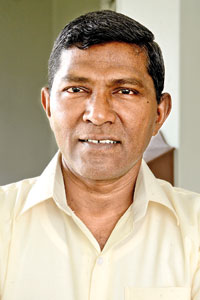
Mahinda Namal
“There were no problems until the government cut the sandbar in the wrong place in 2017,” said Udaya Kumara 45, a sand miner. The sand bar was cut as an express solution to the intense flooding. Historically the sandbar — which forces the river to take a longer, winding route to the sea — was periodically cut to allow floodwaters to subside quickly into the sea. It always regenerated naturally until the 2017 floods when the sandbar was cut in the wrong location, permanently altering the mouth of the Kalu River.
The District Secretary defended the government decision at the time and held that it was done so that a great calamity may be avoided. “It was cut in the new location with the approval of the relevant authorities like the Coastal Conservation Department (CCD) because the floods were very slow to subside,” claimed Kalutara District Secretary Janaka Gunawardhana.
CCD officials, however, deny granting permission, claiming the cut was made “in the middle of the night.” “The new cut does not completely stop flooding, it just reduces it,” R. P. S. D. Pathmasiri, the chief engineer of coastal development said.
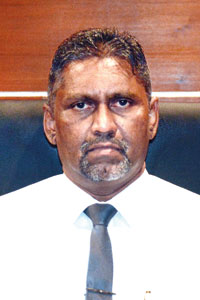
Janaka Gunawardhana
The new cut in the sand bar is not repairing itself because sand is flushed out due to the river’s now direct flow and because of reduced sand deposits from mining, he reasoned.
He explained that while sand mining reduces the sand supply to the bar, the force of the faster-flowing water is also eroding the sandbar. “The increased pull of the water is contributing to faster outflow of river sand and damaging the riverbed,” Mr. Pathmasiri said. “The two issues [sand mining and the sandbar cut] are linked.’’
The river now flows with the sand directly into the sea without reinforcing the beaches North of the river mouth, which has resulted in beach erosion that is severely affecting local tourism. “We’ve already spent Rs. 60 million on revetments to protect the hotel from waves, plus significant amounts compensating customers who arrive expecting a beach. The loss is huge,” said Lakal Jayasinghe, Secretary of the Kalutara Hoteliers Association and Managing Director of Tangerine.
Tangerine, Royal Palm Beach, Anantara, and Avani — four big hotels affected by beach erosion and lagoon deterioration — employ over 1,000 people. Beach erosion and the advancing sea have also destroyed several other buildings.
Moreover, the river which used to flush the lagoon as it flowed through does not move in that direction anymore — this has resulted in the now still water of the lagoon becoming polluted.
“We used to bathe and wash clothes there but not anymore,” said fisherman W.D. Fernando, 70. Fernando’s livelihood has been badly affected. He used to put his motorised boat out to sea through the lagoon but can’t anymore because the river no longer flows that way. “I fish using an oar boat now, which is too exhausting for me to stay out at sea long enough to catch a profitable amount of fish.”
Increased silting and water stagnation are also affecting fish breeding resulting in a decline of fish populations and its ecosystems, confirmed CCD officials.
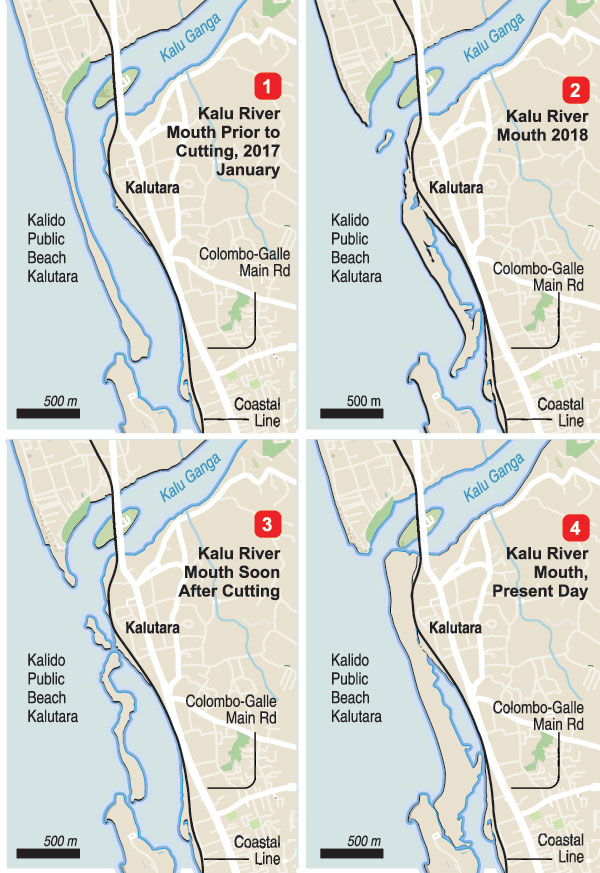
Residents also worry that the bar, which is eroding and moving further inland, is removing an invaluable barrier between the land and the force of the sea.
Mahinda Namal, a schoolteacher and community leader in Kalutara recalled that the sandbar played an important role in reducing damage to the Kalutara town during the 2004 Tsunami. If disaster strikes again, he worries that Kalutara will suffer “a direct hit”. Mr Namal has been organising protests with affected villagers and fishermen to reroute the river mouth to its natural state.
The CCD had planned to artificially reroute the river mouth since 2023, but cites a lack of local support as an obstacle. Consecutive District Secretariats have opposed the plan, arguing it would worsen frequent flooding in the Kalutara district.
The CCD maintains that strategic cuts to the sandbar could still be made during disasters once it is restored. “The proposal involves sealing the new cut and reinstating the river’s original flow,” explained D. T. Rupasinghe, chief engineer of the CCD’s Research and Design Division. He noted that this includes repositioning the sandbar to its original location to restore the natural order of the water system. “In the event of flooding, the sandbar could be cut again, with the expectation that it might regenerate naturally this time. If it doesn’t, we’ll be no worse off than before.”
The best way to say that you found the home of your dreams is by finding it on Hitad.lk. We have listings for apartments for sale or rent in Sri Lanka, no matter what locale you're looking for! Whether you live in Colombo, Galle, Kandy, Matara, Jaffna and more - we've got them all!

